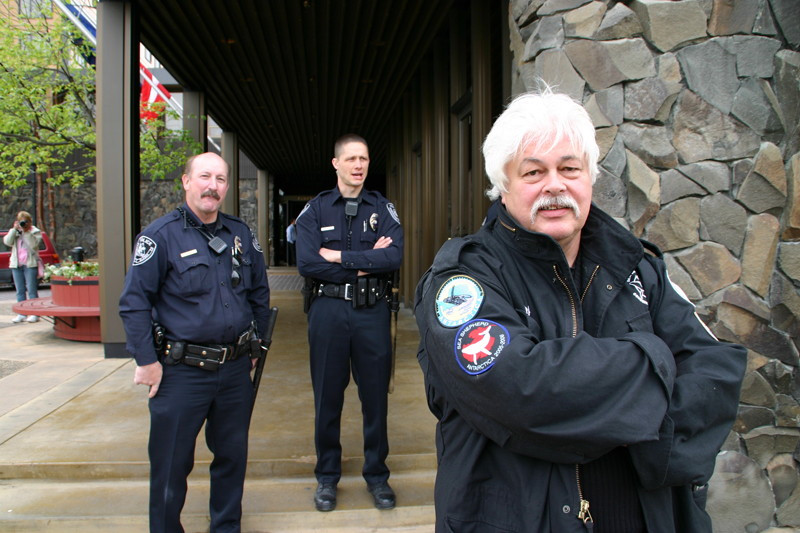Terrorist or hero?
Paul Watson pushes the boundaries as the shepherd of the sea
Great ice shelves, massive expanses of blue ocean water and waddling penguins, Canadian writer/producer/director Trish Dolman’s Eco-Pirate: The Story of Paul Watson opens on great beauty, as far as the eye can see.
However, the audience is quickly reminded what the intent of her film is, and what Paul Watson’s life has been dedicated to fighting, when this majesty is shockingly interrupted by the carcass of a dead whale.
Watson is a vigilante of the sea. As one of the earliest members of Greenpeace, he has been a part of the environmental activism movement since the late 1960s, mainly focusing on the protection of marine mammals.
Dolman’s film follows the crew of Watson’s organization, the Sea Shepherd Conservation Society, aboard the Farley Mowat as they proceed to pursue Japanese whaling ships in the Antarctic waters.
Watson is not a pacifist and compares protesting and bearing witness (a.k.a. Greenpeace’s tactics) to standing by and watching a violent act on the street.
This has made him numerous enemies, which he relishes. This also resulted in him being kicked out of Greenpeace, which he denies by saying he was simply voted off the board.
He is referred to as a “loose cannon” and as having “Pied Piper Syndrome,” as he attracts the young and eager into his crew to change the world.
The film delves into his past and to the beginnings of his questionable practices, with much archival news footage (including a young Peter Mansbridge).
A lot of archival footage is also provided by the Greenpeacers themselves, as each of their campaigns was well documented by the journalists and broadcasters that made up the group.
At times the film is difficult to watch, and it is certainly not for the faint of heart.
Planet Earth this is not, as the viewer is privy to the graphic slaughter of the animals Watson is fighting for. We witness the blow of a harapik to the head of a whitecoat seal and the desperation with which its mother lunges at its body as it is dragged away.
In another shot, the small Zodiac craft carrying Watson is nearly hit by a 250 lb. harpoon as it flies overhead and explodes within the whale they were trying to protect. All of this is captured under Greenpeace’s desire to “bear witness.”
The controversy lies within Watson’s decision to take the law into his own hands, and the methods he employs to stop whalers, which include stink and smoke bombs, water cannons and plates nailed to outpours to back them up (only once did he successfully ram another ship).
As someone who is ecologically minded and interested by this subject, I cannot help but cheer when the Farley Mowat sends a whaling ship packing.
However, objectively I can see where the issue lies. It is a matter of ethics, and asking where is the line if you have already passed it? How far is too far, and what will it take to make him reconsider his methods?
The most interesting aspect of the film is the insight into the man himself.
Dolman balances Watson’s views with those of his peers and opposition, including his former Greenpeace friends and even the Japanese Whaling Commissioner (who also made an appearance in 2009’s The Cove).
His former wife acknowledges that he is a narcissist and an absent father, but calls him a “stubborn, committed man that perseveres,” and argues that these qualities have gotten him to where he is today.
As one of his peers says, “He’s not a perfect person by any means, but I consider him a hero.”
Published in Volume 66, Number 5 of The Uniter (September 29, 2011)








